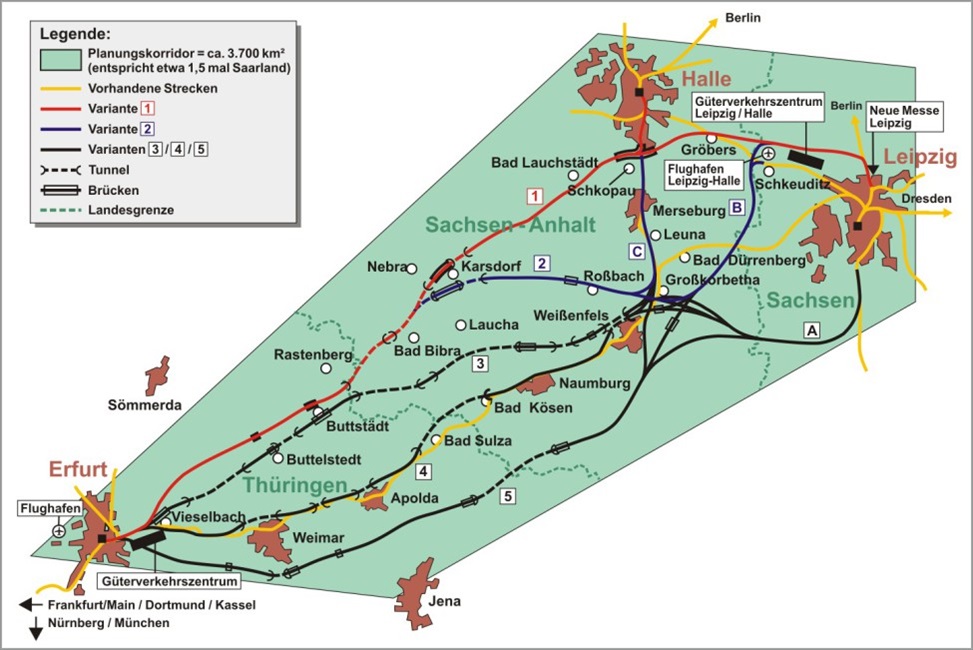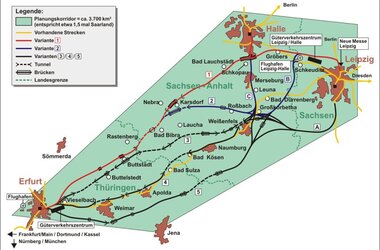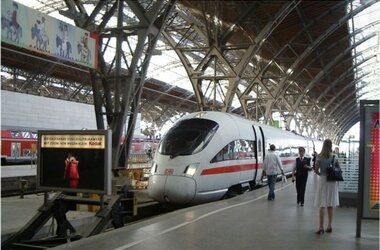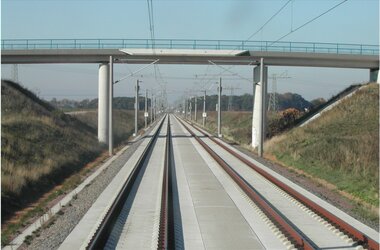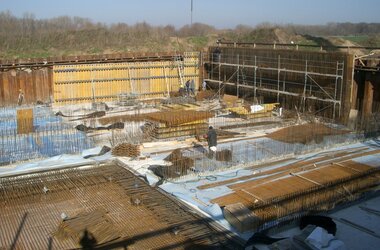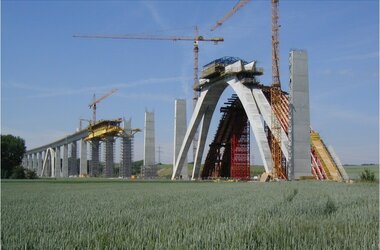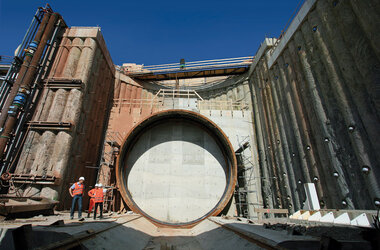Traffic release of Erfurt – Halle/Leipzig high-speed railway
On 13 December 2015, the route of the Erfurt – Halle/Leipzig high-speed railway, costing approximately EUR 3 billion, was inaugurated in the presence of the German Chancellor. The major portion of the connection between Bavaria and Berlin is now in operation. The journey times on the ICE for the 121 kilometres between Erfurt and Leipzig are thus shortened from 70 to 43 minutes and for the 92 kilometres between Erfurt and Halle from 75 to 34 minutes.
KREBS+KIEFER was very much involved in the planning and implementation here and made a significant contribution to the successful commissioning.
On 13 December 2015, the route of the Erfurt – Halle/Leipzig high-speed railway, costing approximately EUR 3 billion, was inaugurated in the presence of the German Chancellor. The major portion of the connection between Bavaria and Berlin is now in operation. The journey times on the ICE for the 121 kilometres between Erfurt and Leipzig are thus shortened from 70 to 43 minutes and for the 92 kilometres between Erfurt and Halle from 75 to 34 minutes.
KREBS+KIEFER was very much involved in the planning and implementation here and made a significant contribution to the successful commissioning.
In 1990, KREBS+KIEFER was commissioned by the former German state railway with a decision study.
As German Unity traffic project VDE 8.2, the project was taken over by the Railway Construction Planning Company of German Unity (PBDE – Planungsgesellschaft Bahnbau Deutsche Einheit) in 1991.
KREBS+KIEFER, in addition to the decision study and route finding, was then commissioned with the land-use planning and ultimately with the general planning (for design and planning approval) of the route sections 6.8 km east of Erfurt to 88.4 km east of the route branching south of Halle. In 2007, the planning for the DB Project Construction, the successor organisation of PBDE, was concluded with the completion of the design specifications and the attainment of the planning approval notices.
The planning corridor to be examined was 3,700 km². The design speed of the double-track high-speed line is 300 km/h. In addition to the open line and its intersecting routes, 6 viaducts with a total length of nearly 13.5 km and 3 tunnels to be dug out with a total of 15 km were planned in the in-depth project management.
At times between 50 and 60 planners worked on the project in order to ensure success. In total, about 45 subcontractors were commissioned, and were professionally and economically managed.
Milestones of KREBS+KIEFER engineering skill here in particular were the Saale-Elster viaduct, the Unstruttal bridge and the Finne tunnel.
The Saale-Elster viaduct, planned and contracted out by KREBS+KIEFER, crosses the Saale-Elster floodplain at 6,465 metres in length in the west-east direction and with a 1,225-metre-long crossing-free branch line towards Halle. It is therefore the longest bridge structure in Germany and the longest intercity railway bridge in Europe.
It was possible to hand over another key project to the client upon completion of the work on the Unstruttal bridge, costing nearly EUR 55 million — the second longest railway bridge in Germany at 2,668 metres long. KREBS+KIEFER was responsible for the construction supervision and provision of building inspection services according to the administrative regulations for construction for the Federal Railway Authority until 2012.
KREBS+KIEFER also created the tender documents for the 6,886-metre-long shield-mined Finne tunnel.
Together with DB AG, we are pleased that Germany and Europe have been moved closer again, and that we successfully contributed to it.
